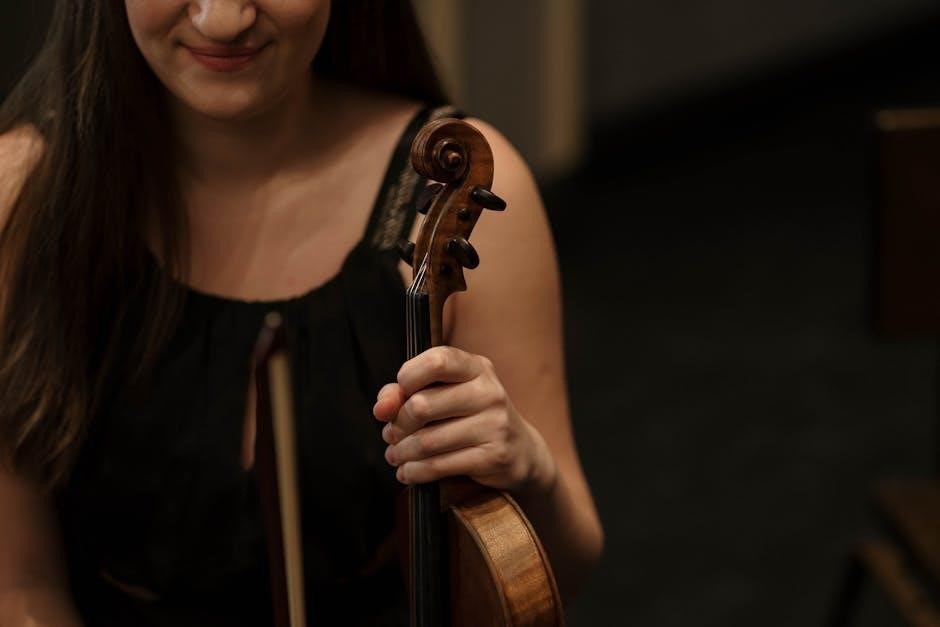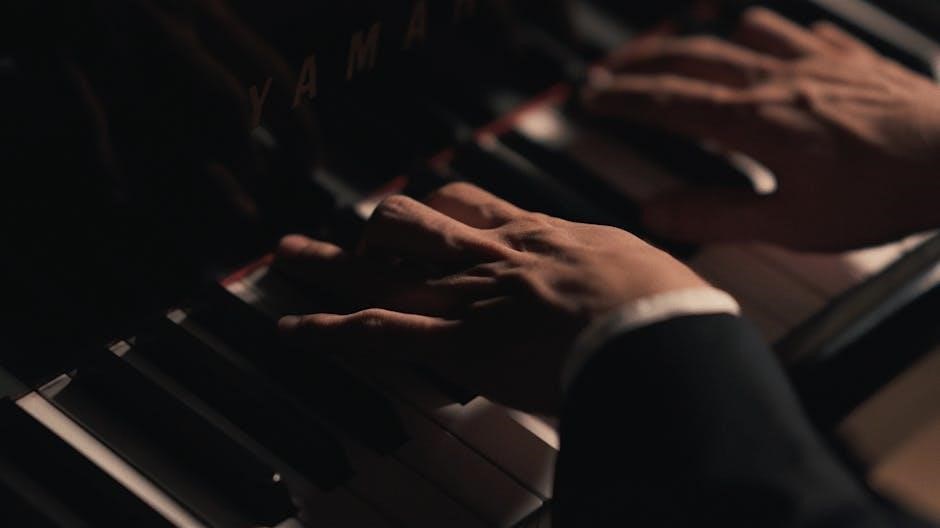Ludwig van Beethovens Piano Sonata No 8 in C minor is commonly known as Sonata Pathetique written in 1798 and published in 1799 as a musical composition for piano soloists everywhere always
Background Information
The Sonata Pathetique was written during a time of great change and innovation in the music world, with composers pushing the boundaries of classical music. This sonata is a reflection of that era, showcasing Beethoven’s unique style and flair. The sonata’s name, Pathetique, is a nod to the dramatic and expressive nature of the music; The sonata is composed of three movements, each with its own distinct character and mood. The first movement is marked by a sense of urgency and intensity, while the second movement is more subdued and contemplative. The third movement is a lively and energetic finale, bringing the sonata to a close. The Sonata Pathetique is considered one of Beethoven’s most popular and enduring works, and its beauty and emotion continue to captivate audiences today. The sonata’s background is rooted in classical music traditions, with a focus on technical skill and artistic expression, and its impact can still be felt in the music world.
Composition and Publication
The Sonata Pathetique was composed in 1798, when Beethoven was 27 years old, and was published in 1799. The sonata was dedicated to Prince Karl von Lichnowsky, a friend and patron of Beethoven’s. The publication of the sonata marked an important milestone in Beethoven’s career, as it helped to establish him as a major composer of piano music. The sonata was originally titled “Grande sonate pathétique” and was published by the Vienna music publisher, Artaria. The publication included a dedication to Prince Lichnowsky, and was widely praised by critics and audiences alike. The sonata’s composition and publication are a testament to Beethoven’s skill and craftsmanship as a composer, and its enduring popularity is a reflection of its beauty and emotional power. The sonata’s publication history is well-documented, and it remains one of the most popular and influential piano sonatas of all time, with its music still widely performed and admired today.

Downloading Sonata Pathetique PDF
Users can download and print Sonata Pathetique PDF files from various online music platforms and websites easily always using internet connection and devices available everywhere instantly now
Availability of PDF Files
The availability of Sonata Pathetique PDF files is widespread, with numerous online platforms offering downloads and prints of the musical composition. These platforms provide users with easy access to the PDF files, allowing them to download and print the sheets music instantly; The PDF files are available in various formats, including solo piano and accompanied versions, catering to different user preferences. Additionally, many websites offer free downloads of the PDF files, while others require a subscription or a one-time payment. The ease of access to these PDF files has made it possible for musicians and music enthusiasts to explore and enjoy the beautiful melody of Sonata Pathetique from the comfort of their own homes. Overall, the availability of Sonata Pathetique PDF files has democratized access to classical music, making it possible for people from all over the world to appreciate and play the composition. Music lovers can now easily find and download the PDF files online.
Online Resources
Several online resources are available for individuals seeking to download or access Sonata Pathetique PDF files. These resources include music libraries, online marketplaces, and specialized websites dedicated to classical music. Many of these websites offer a wide range of features, such as search functionality, user reviews, and ratings, to help users find the most suitable PDF files for their needs. Some popular online resources also provide additional tools and services, including audio recordings, video tutorials, and interactive lessons, to enhance the learning experience. By utilizing these online resources, users can easily discover and access high-quality Sonata Pathetique PDF files, as well as other related materials and resources. Overall, the internet has made it easier for people to find and access the resources they need to enjoy and appreciate classical music, including Sonata Pathetique. These online resources are constantly evolving and improving. Music enthusiasts can find them easily.

About the Composer
Ludwig van Beethoven was a renowned German composer and pianist born in Bonn always creating musical masterpieces for piano soloists everywhere with great talent and skill always present
Biographical Information
Ludwig van Beethoven was born in Bonn, Germany to Johann van Beethoven and Maria Magdalena Keverich, his family celebrated his birth on December 16, 1770, although the exact date is not known. He was a renowned German composer and pianist, known for his musical masterpieces. Beethoven’s life was marked by his struggles with hearing loss, which began in his late 20s and progressed over time. Despite this, he continued to compose music, producing some of his most famous works, including symphonies, piano sonatas, and chamber music. Beethoven’s music is known for its emotional depth and technical complexity, and he is widely regarded as one of the most important figures in the history of classical music. His life and music have been the subject of numerous books, films, and other works, and he remains one of the most beloved and respected composers of all time, with a legacy that continues to inspire and influence musicians and music lovers around the world.
Relevance to Sonata Pathetique
Beethoven’s personal life and experiences had a significant impact on his music, including the Sonata Pathetique. The sonata is a reflection of his emotional state during the late 1790s, a time of great turmoil and struggle. The music is characterized by its intense passion and drama, which is reminiscent of Beethoven’s own personal struggles. The Sonata Pathetique is also notable for its technical innovation, which was a hallmark of Beethoven’s compositional style. The sonata’s relevance to Beethoven’s life and music is evident in its emotional depth and technical complexity, making it one of the most important and influential works in the classical music repertoire. The sonata’s popularity has endured for centuries, and it remains a beloved and respected work among musicians and music lovers. Beethoven’s legacy continues to inspire and influence new generations of musicians and composers. His music remains timeless and universal.

Other Notable Works
Beethoven composed many famous piano sonatas and symphonies as musical masterpieces always played everywhere by pianists and musicians with great skill and precision every time perfectly always

Moonlight Sonata
The Moonlight Sonata is a famous piano sonata composed by Ludwig van Beethoven, with the official name of Piano Sonata No 14 in C sharp minor, Op 27, No 2. This sonata is one of the most popular and recognizable piano sonatas in the world, known for its dreamy and introspective quality. The sonata is divided into three movements, with the first movement being the most famous and widely recognized. The Moonlight Sonata is considered one of the most technically challenging piano sonatas, requiring a great deal of skill and precision to play correctly. Many pianists and musicians have recorded and performed the Moonlight Sonata, and it remains one of the most beloved and enduring pieces of music in the classical repertoire. The sonata’s beauty and emotion have made it a favorite among music lovers for centuries, and it continues to inspire and influence musicians to this day with its timeless beauty and technical complexity.
Comparison to Sonata Pathetique
The Moonlight Sonata and Sonata Pathetique are two distinct piano sonatas with different characteristics. While the Moonlight Sonata is known for its dreamy and introspective quality, the Sonata Pathetique is characterized by its dramatic and emotional depth. Both sonatas showcase Beethoven’s mastery of piano composition, but they differ in terms of tone and style; The Sonata Pathetique is often considered more technically challenging, with complex fingerwork and dramatic dynamic shifts. In contrast, the Moonlight Sonata is notable for its soothing and contemplative nature. Despite these differences, both sonatas are considered essential works in the classical piano repertoire, and pianists often perform and record them together. The comparison between these two sonatas highlights Beethoven’s innovative and expressive approach to music, and demonstrates his ability to create unique and enduring works of art. Each sonata has its own unique charm and beauty, reflecting Beethoven’s genius and creativity.
